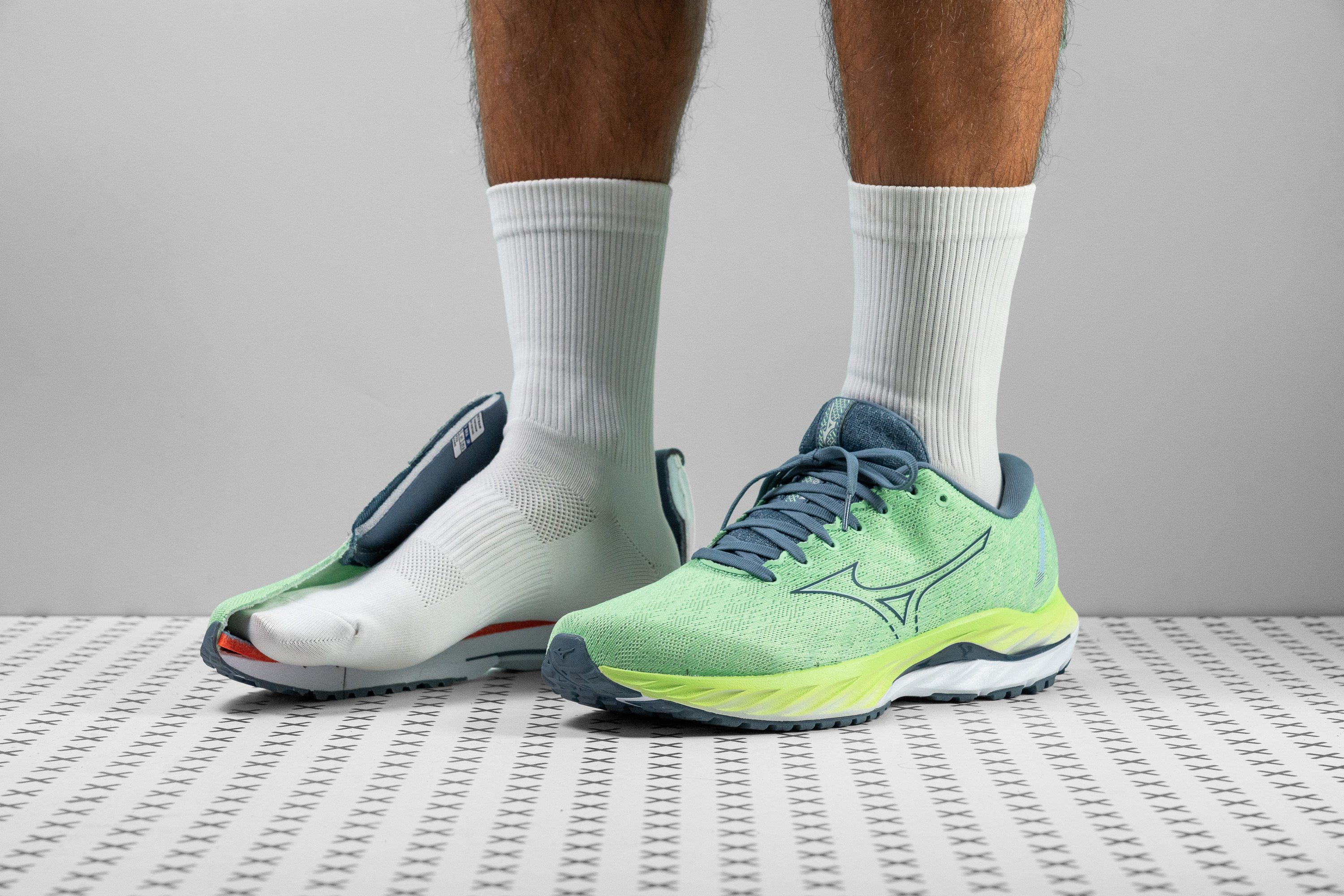Our verdict
- Top pick in best Mizuno running shoes (2023)
Pros
- Embedded Wave Plate enhances stability and responsiveness
- Enerzy Lite midsole delivers thick, protective cushioning
- Strong grip even in wet conditions
- Handles light trails with ease
- X10 rubber is tough and long-lasting
- Well-built upper
- Perfect fit for runners with wide feet
Cons
- Upper lacks breathability
- Fit may be too loose for narrow feet
- The 12.4-mm heel drop might not suit everyone
Audience verdict
Comparison
The most similar running shoes compared
+ + Add a shoe | |||||
|---|---|---|---|---|---|
| Audience score | 88 Great! | 88 Great! | 86 Good! | 85 Good! | |
| Price | £140 | £160 | £140 | £140 | |
| Pace | Daily running | Daily running | Daily running | Daily running | |
| Shock absorption | - | - | Moderate | Moderate | |
| Energy return | - | - | Low | Moderate | |
| Traction | - | - | High | High | |
| Arch support | Stability | Stability | Stability | Stability | |
| Weight lab Weight brand | 10.3 oz / 293g 10.7 oz / 303g | 11.6 oz / 329g 11.8 oz / 334g | 10.1 oz / 286g 4.9 oz / 140g | 10.4 oz / 295g 10.5 oz / 298g | |
| Drop lab Drop brand | 12.4 mm 12.0 mm | 7.2 mm 8.0 mm | 12.9 mm 12.0 mm | 9.3 mm 8.0 mm | |
| Strike pattern | Heel | HeelMid/forefoot | Heel | HeelMid/forefoot | |
| Size | True to size | Slightly small | True to size | Slightly small | |
| Midsole softness | Soft | Balanced | Balanced | Soft | |
| Difference in midsole softness in cold | Small | Normal | Small | Big | |
| Toebox durability | Decent | Decent | Decent | Decent | |
| Heel padding durability | Decent | Bad | Good | Bad | |
| Outsole durability | Good | Good | Good | Decent | |
| Breathability | Moderate | Moderate | Moderate | Moderate | |
| Width / fit | Medium | Medium | Wide | Medium | |
| Toebox width | Wide | Wide | Medium | Medium | |
| Stiffness | Moderate | Stiff | Moderate | Moderate | |
| Torsional rigidity | Moderate | Stiff | Moderate | Moderate | |
| Heel counter stiffness | Stiff | Stiff | Stiff | Stiff | |
| Heel lab Heel brand | 38.2 mm 36.0 mm | 39.1 mm 41.0 mm | 38.0 mm 38.0 mm | 36.8 mm 38.0 mm | |
| Forefoot lab Forefoot brand | 25.8 mm 24.0 mm | 31.9 mm 33.0 mm | 25.1 mm 26.0 mm | 27.5 mm 30.0 mm | |
| Widths available | NormalWide | NormalWide | NormalWide | NarrowNormalWideX-Wide | |
| Orthotic friendly | ✓ | ✓ | ✓ | ✓ | |
| Season | All seasons | All seasons | All seasons | All seasons | |
| Removable insole | ✓ | ✓ | ✓ | ✓ | |
| Ranking | #232 Top 35% | #136 Top 37% | #180 Top 48% | #216 Bottom 42% | |
| Popularity | #488 Bottom 26% | #281 Bottom 25% | #210 Bottom 43% | #32 Top 9% |
Who should buy
We think that the Mizuno Wave Inspire 19 is a good choice for:
- Runners seeking a reliable mild stability daily trainer that offers exceptional durability, if a little extra weight is not a concern.
- Loyal Mizuno users eager to include a daily trainer in their lineup, perfect for those easy and aerobic-focused days.
- Athletes with wide feet who need a spacious and comfortable shoe that provides a cushioned ride without sacrificing fit.
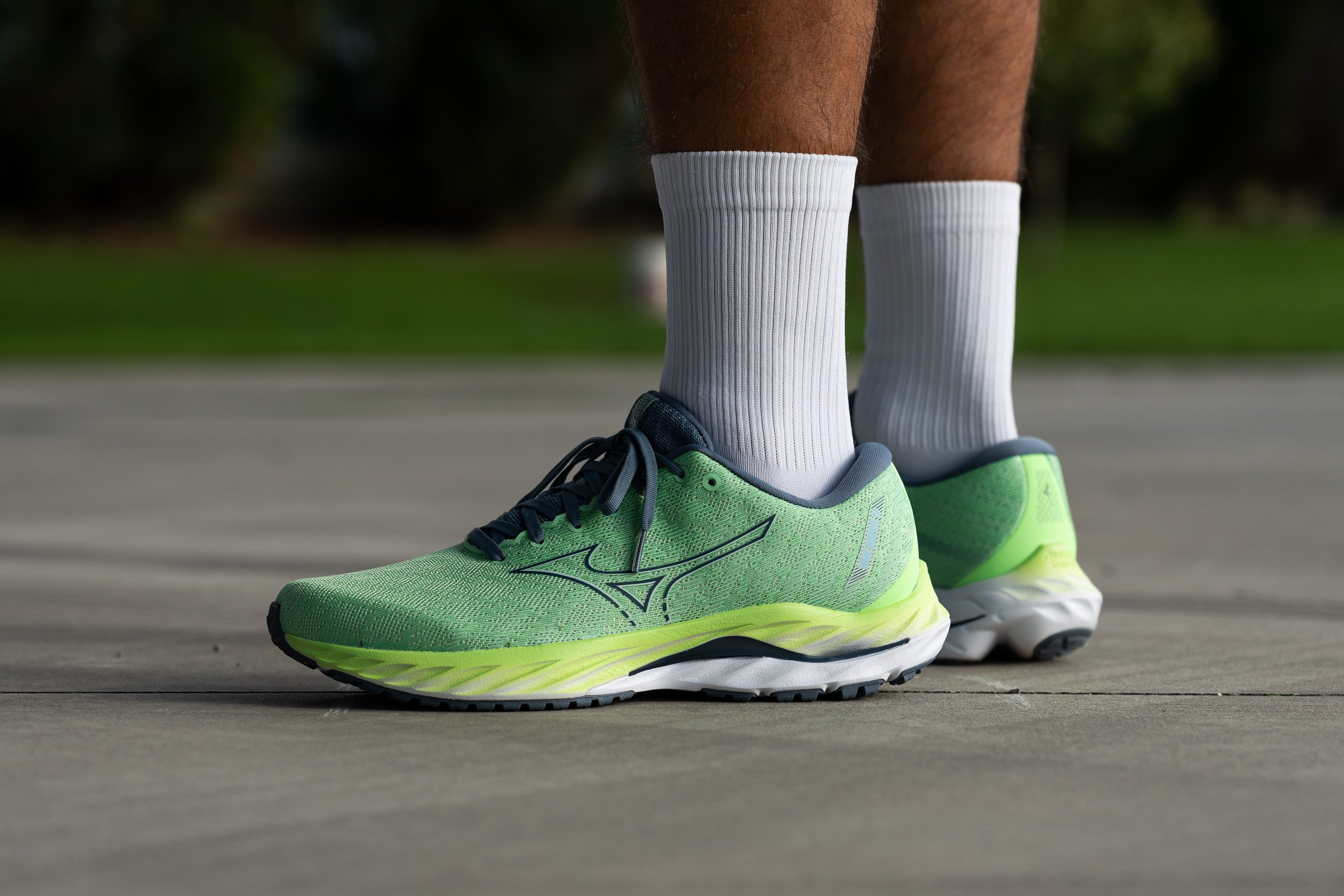
Who should NOT buy
For those with narrow feet, the Wave Inspire 19 may not be the best fit. We think you should consider exploring other options in the mild stability category, such as the Saucony Tempus or the Brooks Glycerin GTS 20 with its renowned GuideRails technology.
Additionally, the Wave Inspire 19's significant heel-to-toe drop might not cater well to forefoot or some midfoot strikers. In our view, alternatives with a lower drop, such as the Hoka Arahi 6 or the ASICS GT 2000 11, could offer a more suitable geometry for these running styles.

Cushioning
Heel stack
Since the shoe is clearly designed for heel strikers, we weren't surprised when we measured a 38.2 mm heel height, which is a bit above average.
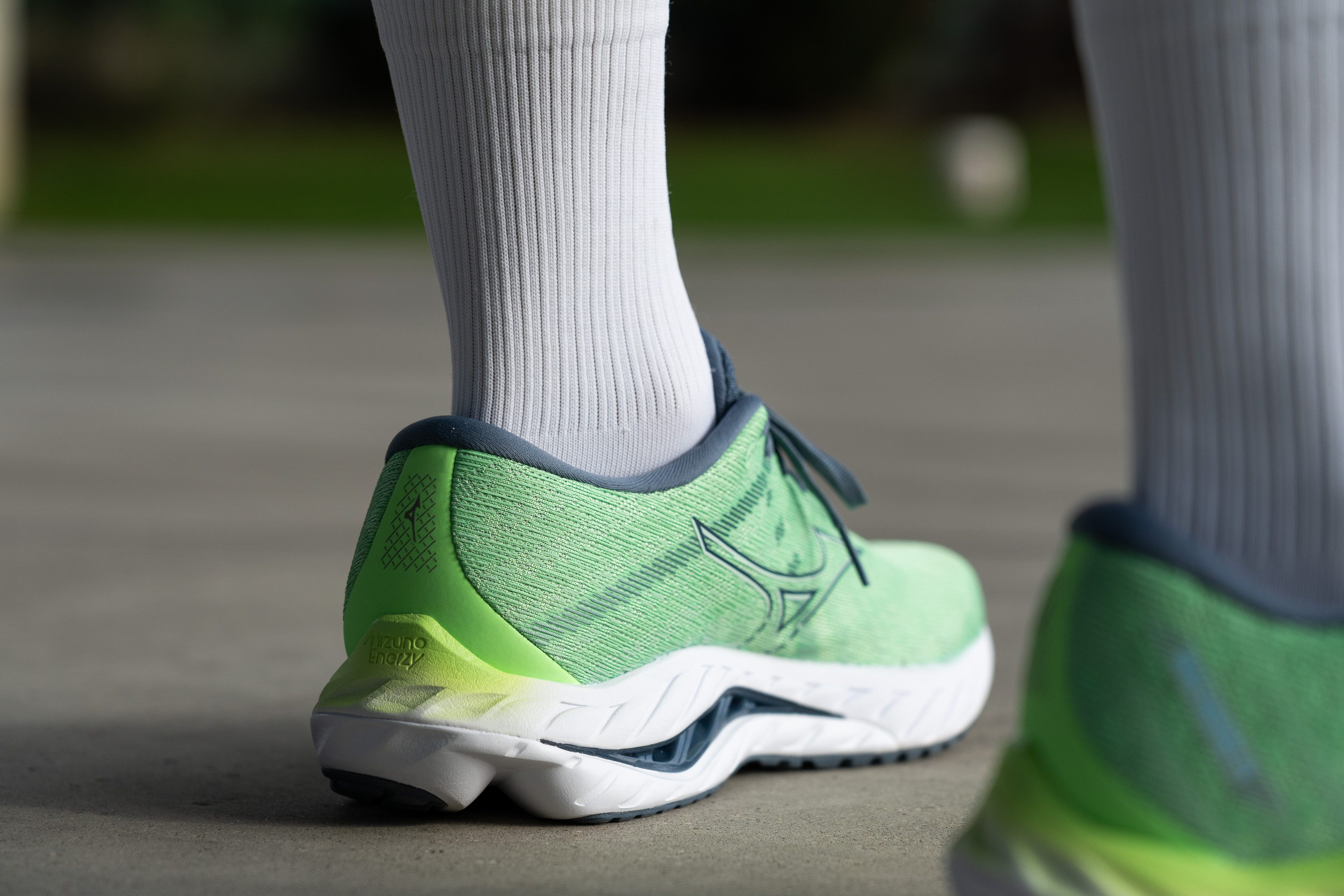
The Wave Inspire 19 offers plenty of cushioning. No matter your weight, you can count on this Mizuno to provide the support you need.
| Wave Inspire 19 | 38.2 mm |
| Average | 34.8 mm |
Forefoot stack
The forefoot thickness is comfortably average, measuring at 25.8 mm.
| Wave Inspire 19 | 25.8 mm |
| Average | 26.2 mm |
Drop
The 12.4-mm heel-to-forefoot drop in this shoe underscores Mizuno's focus to serving heel strikers with the Wave Inspire 19.
However, this doesn't rule out forefoot or midfoot strikers—just know that you're opting for a shoe with a significant drop, complete with its unique characteristics, as we've detailed in our heel-to-toe drop guide.
By the way—take a closer look at the photo, and you'll notice the Wave Plate in the heel and midfoot area.
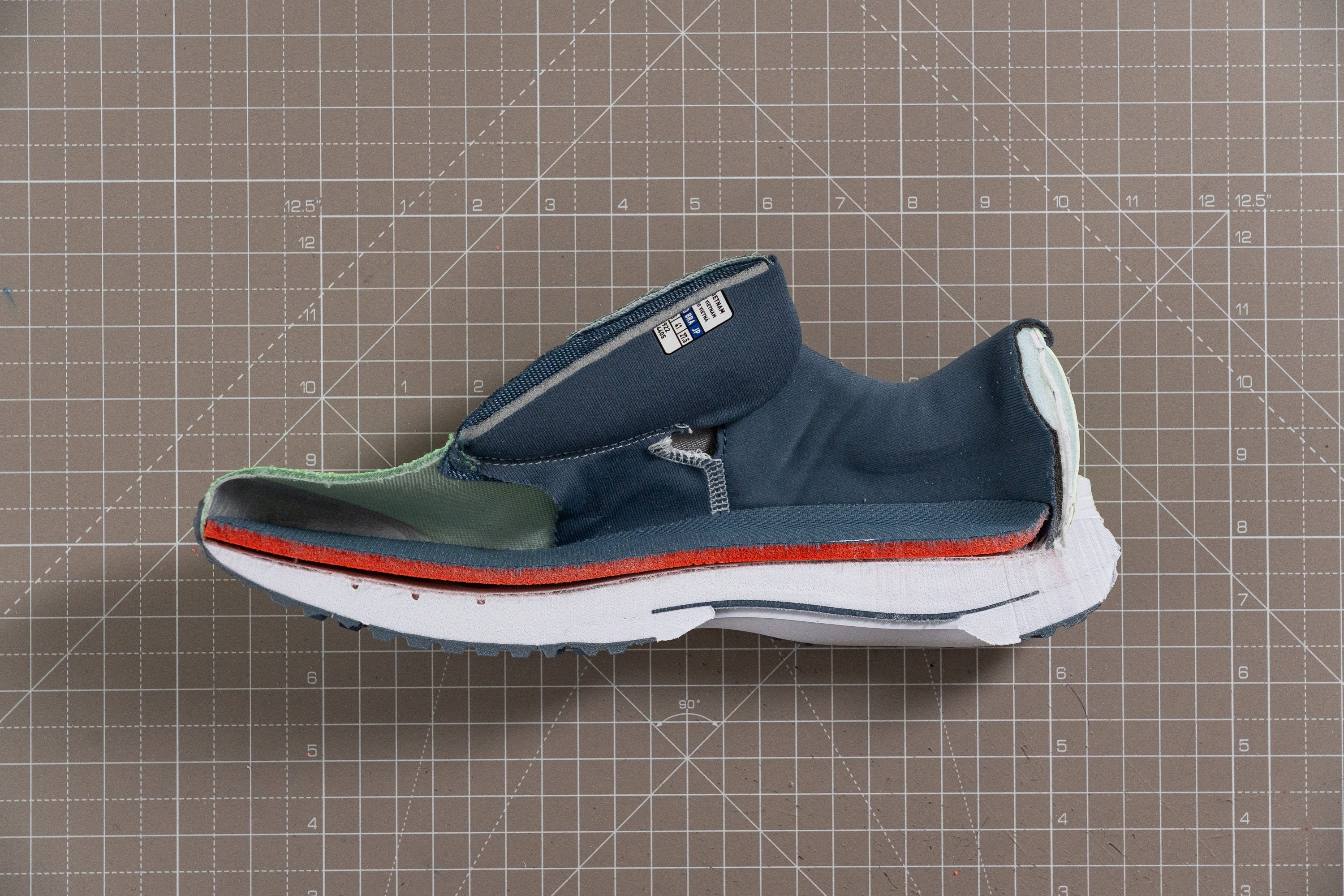
| Wave Inspire 19 | 12.4 mm |
| Average | 8.6 mm |
Midsole softness
In the midsole, we discovered the Mizuno Enerzy Lite foam. This TPE-based foam enhances the cushioning by 17% and energy return by 15% over a regular EVA foam, marking a significant upgrade.
During our test runs, the shoe felt well-balanced yet not overly plush (19.8 HA), which appears to be the right choice for a shoe designed with mild pronators in mind.

| Wave Inspire 19 | 19.8 HA |
| Average | 20.4 HA |
Size and fit
Size
Mizuno Wave Inspire 19 fits true to size (35 votes).
Width / Fit
We're happy to share that the toebox is designed as the midsole, so it's a real treat for runners with wide feet. Measuring at a whooping 102.4 mm, it offers ample room for your feet.
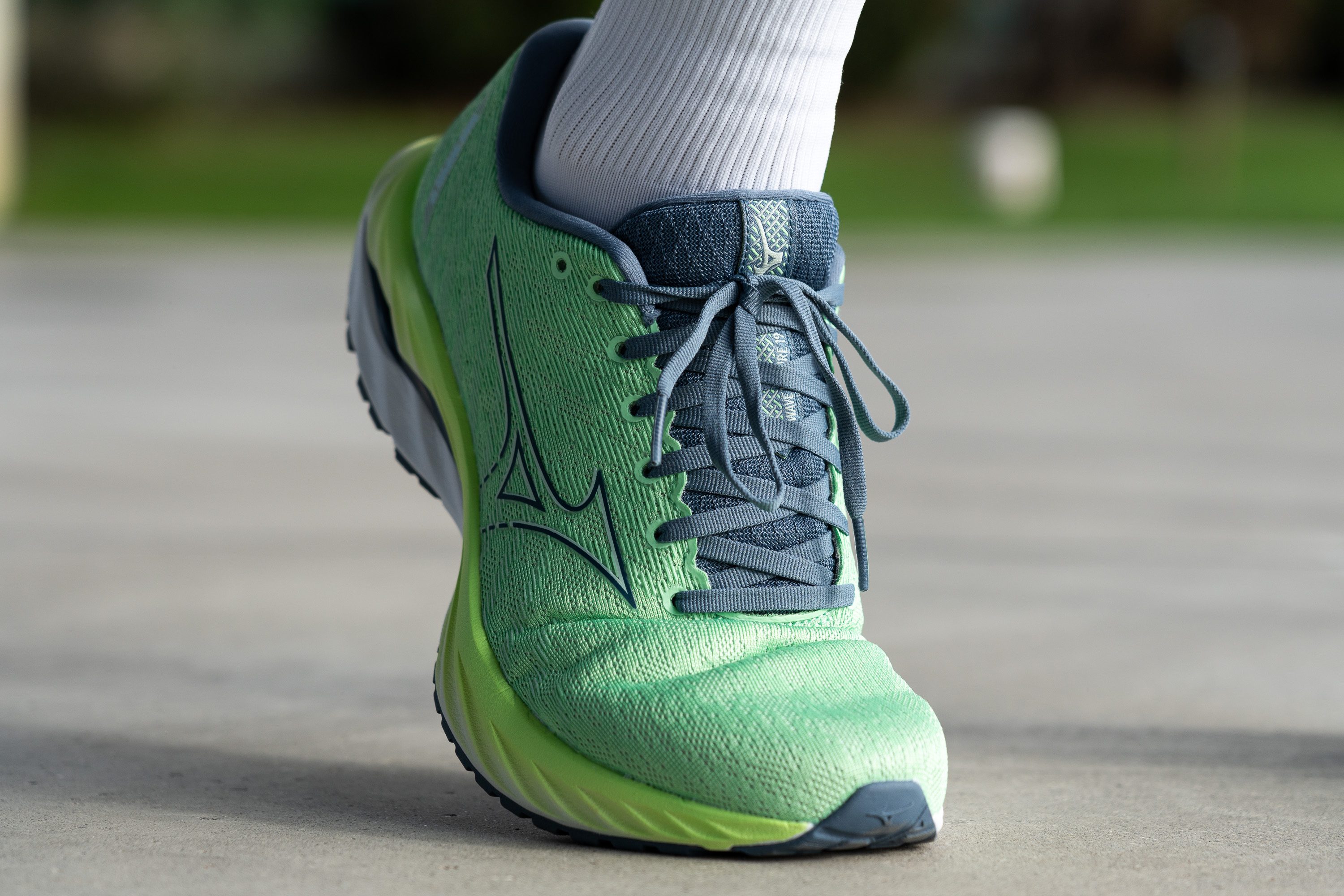
And Mizuno doesn't stop there—they even provide a wide size option, ensuring that absolutely no one feels left out due to having wider feet.
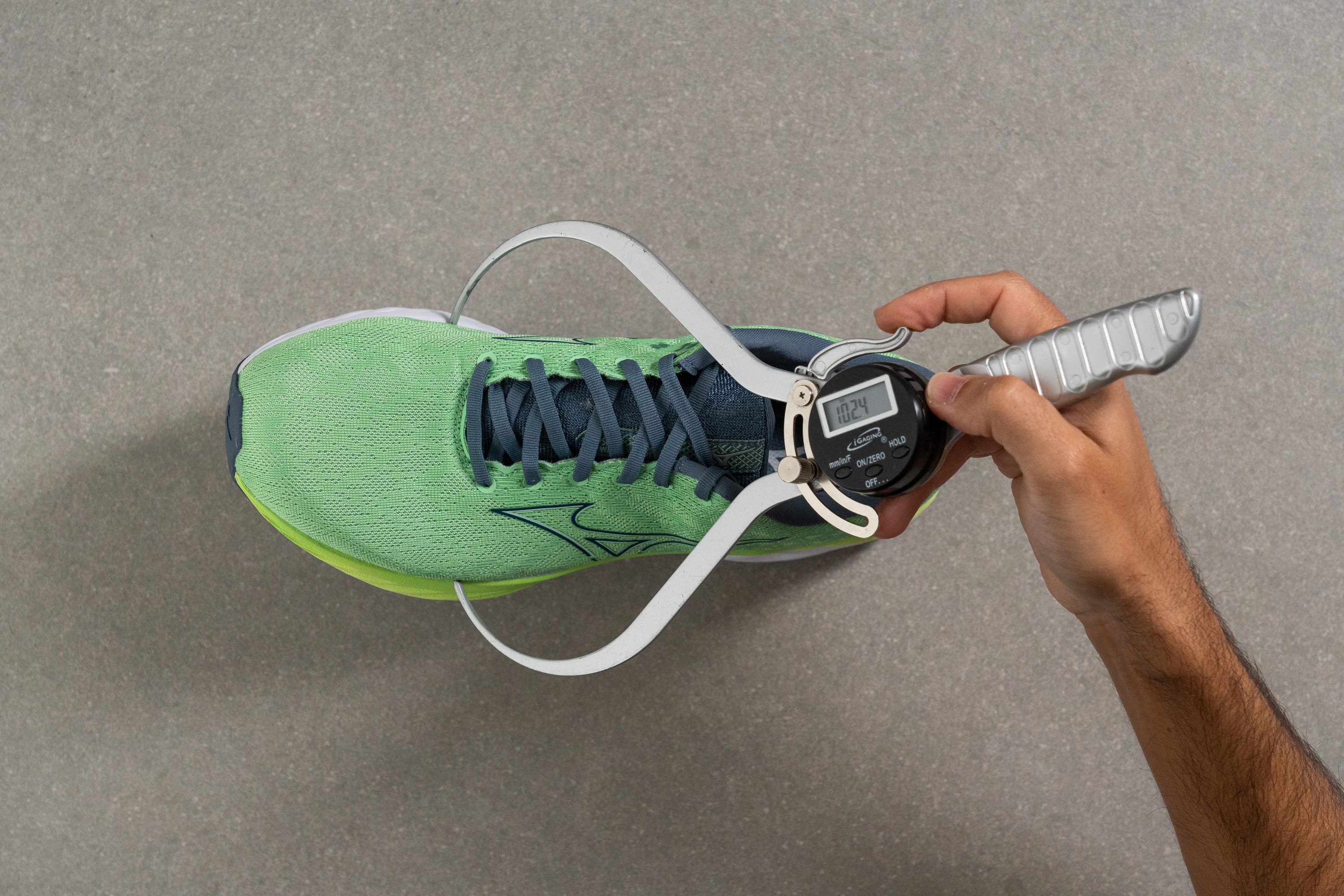
This test follows an older methodology, which is why you don't see recently tested shoes in the chart. Results from different methodologies can not be compared.
| Wave Inspire 19 | 102.4 mm |
| Average | 98.5 mm |
Toebox width
We measured the toe area to gauge the space available for toe spread.
Our findings indicate it tapers more than anticipated, yet at 79.6 mm, it remains more generous than the typical shoe, offering ample room for toe splay.
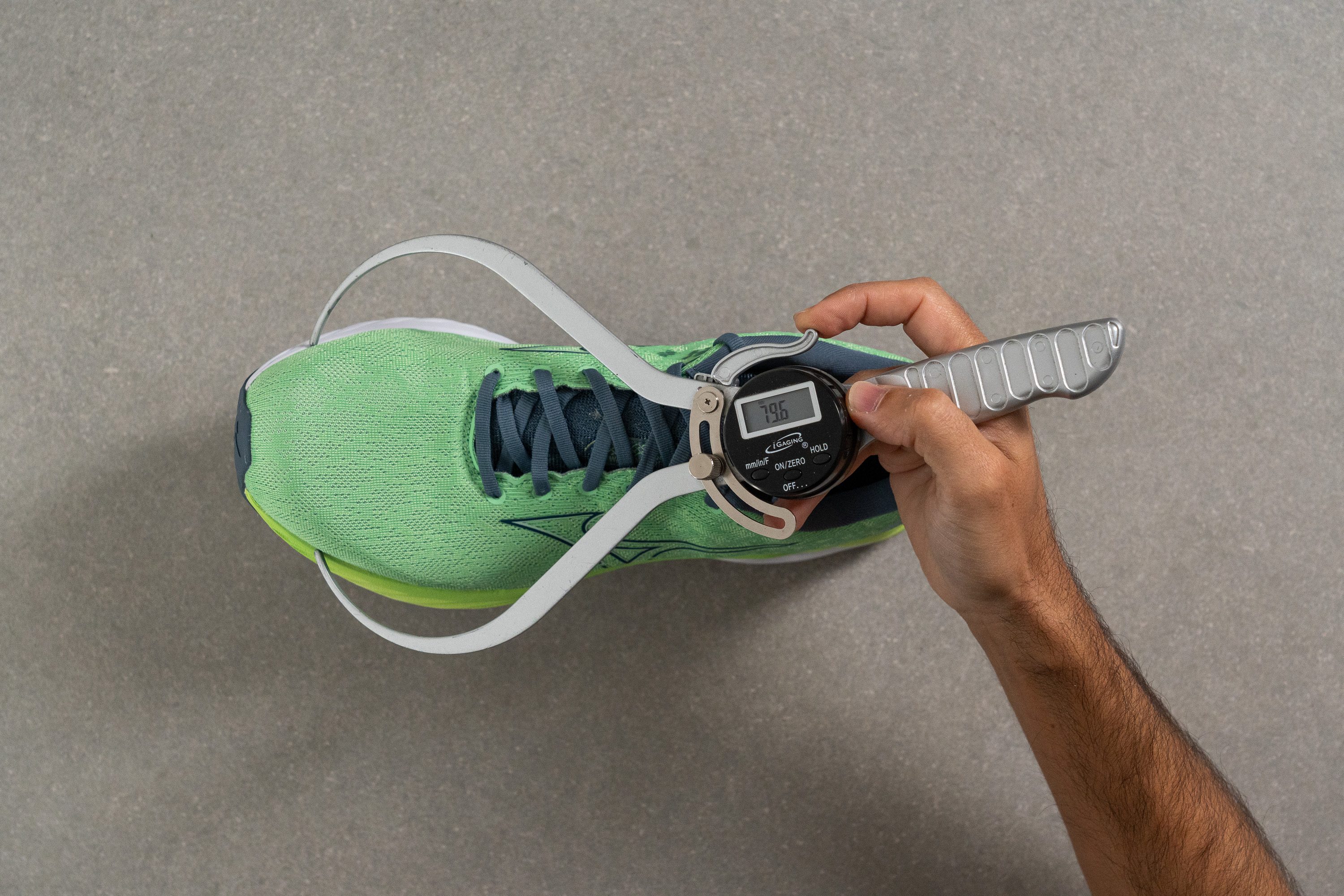
This test follows an older methodology, which is why you don't see recently tested shoes in the chart. Results from different methodologies can not be compared.
| Wave Inspire 19 | 79.6 mm |
| Average | 78.4 mm |
Flexibility / Stiffness
We had the idea that the Mizuno Wave Plate in the midsole might lead to a stiffer shoe.
But when we put it to the test in our lab, bending the shoe to a 90-degree angle took only 16.1N of force. This means the plate keeps the shoe comfortable, not overly stiff.
This test follows an older methodology, which is why you don't see recently tested shoes in the chart. Results from different methodologies can not be compared.
| Wave Inspire 19 | 16.1N |
| Average | 28.1N |
Stiffness in cold (%)
We applied the same freezing method as we did for the softness test to gauge the shoe's response to cold conditions.
We found that it took 20.1N of force to flex the shoe to 90 degrees again, yielding a result quite close to the previous one.
We've seen a solid 25% increase, a performance that surpasses most options on the market. This impressive result highlights the great performance of the TPE-based Enerzy Lite foam.
| Wave Inspire 19 | 25% |
| Average | 33% |
Weight
We feel that for the 20th edition of the Wave Inspire, Mizuno really needs to trim a full centimetre off the outsole.
At 10.3 oz or 293g, the shoe tips the scales a bit too much, and with the use of their tough X10 rubber, they definitely could find a sweeter spot between durability and a lighter weight.
| Wave Inspire 19 | 10.3 oz (293g) |
| Average | 9.3 oz (264g) |
Breathability
Mizuno chose a Jacquard mesh upper for the Wave Inspire 19, and we noticed one potential downside: breathability. The intricate patterns woven into the thick engineered mesh upper can restrict airflow.
In our lab, we tested the Wave Inspire 19 using a smoke-pumping machine and rated its breathability at 3 out of 5.
That's not great for hot summer runs, but if you're running in cooler or mild climates, it strikes a nice balance between ventilation and keeping your feet warm.
We then shone a powerful light through the upper. And we found that the shoe allows air in only through the toebox, not the midfoot. This is perfectly logical, as the Wave Inspire 19 is designed for mild stability, which necessitates a certain level of structure in this area for proper support.

Zooming in with our microscope, we determined that there are no ventilation holes, which explains the lower breathability score when compared to the average shoe.

Lastly, we observed that Mizuno really focused on comfort for this shoe. The upper is super padded and layered, which feels great but doesn't do much for airflow.
| Wave Inspire 19 | 3 |
| Average | 3.7 |
Stability
Lateral stability test
The Wave Inspire series aims to combine a standard daily trainer with a stability shoe. This mix creates a hybrid that's perfect for runners with mild stability needs or those who want a more stable feel on certain days.
And the shoe really delivers on stability for most runners. Mizuno has managed to do this without adding bulky elements to the upper, which is a big plus.
Torsional rigidity
Looking at torsional rigidity, Mizuno played it safe and stuck to what you'd expect from a regular daily trainer, earning a 3/5 score from us.
This approach makes the shoe very comfortable for daily wear and easy runs.
| Wave Inspire 19 | 3 |
| Average | 3.5 |
Heel counter stiffness
Mizuno took an aggressive approach with the heel counter to enhance stability and differentiate this shoe from a neutral daily trainer. Scoring a 5/5, it's exceptionally rigid—our video showed it hardly flexed at all.
This design is spot-on for the shoe's target users, predominantly heel strikers. It ensures reliable support, particularly benefiting mild pronators needing some guidance.
| Wave Inspire 19 | 5 |
| Average | 2.9 |
Midsole width - forefoot
A major factor in the enhanced stability of this shoe, compared to other daily trainers, is its width. Measuring at 117.8 mm, it provides a broad landing platform that boosts stability at any pace.
This generous width is a key feature, contributing to a stable and secure feel underfoot for those with mild pronation issues.
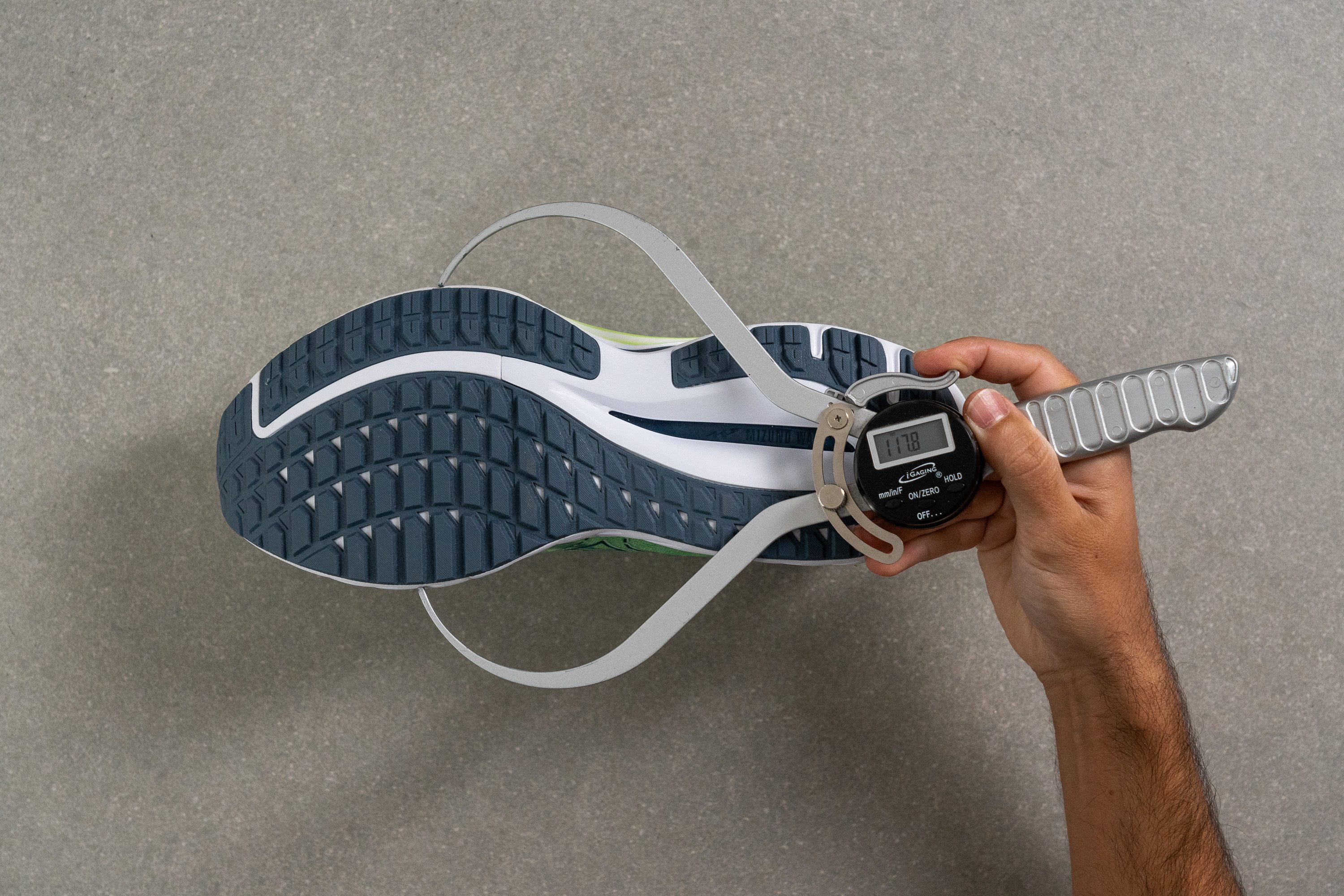
| Wave Inspire 19 | 117.8 mm |
| Average | 114.4 mm |
Midsole width - heel
The heel design is crucial in this shoe because that's where the majority of Wave Inspire users will make contact with the ground.
This broader heel, when combined with the stiff heel counter, allows for a stable shoe that avoids the need for additional, obtrusive elements like medial posts.
The result is a seamless and supportive ride that enhances stability in a non-intrusive way, perfect for long runs where comfort is key.
| Wave Inspire 19 | 94.8 mm |
| Average | 90.7 mm |
Durability
Toebox durability
Shoes with low breathability can sometimes be more durable because of thicker materials.
When we put the WI19 through our dremel test to check durability, it got just an okay result with a score of 2 out of 5.
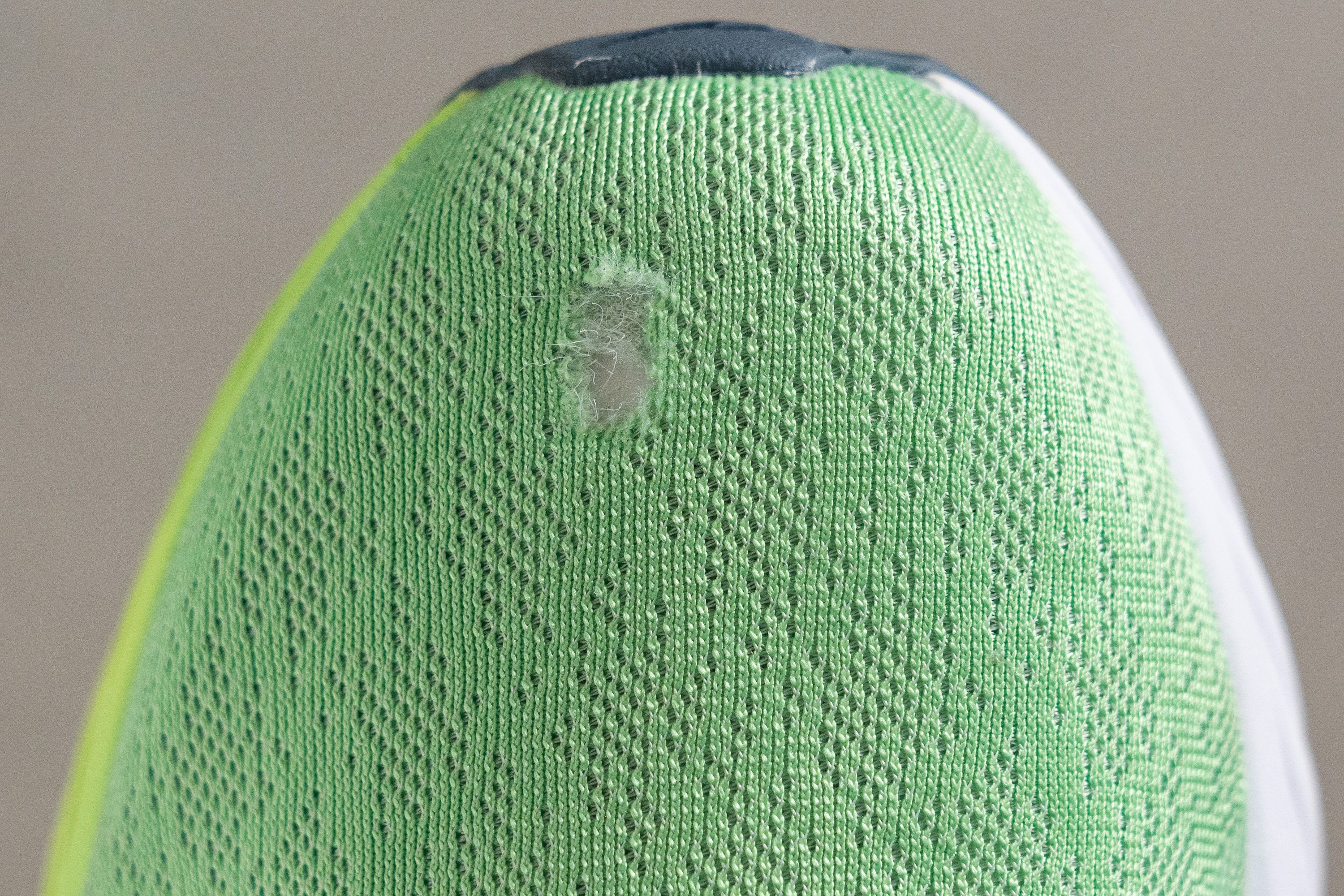
| Wave Inspire 19 | 2 |
| Average | 2.6 |
Heel padding durability
We repeated the durability test on the shoe's heel collar and saw a slight improvement, scoring a 3 out of 5.
It's a good result, especially considering the generous, plush padding in that area, which often affects a shoe's ability to hold up over time.

| Wave Inspire 19 | 3 |
| Average | 3.4 |
Outsole hardness
We turned the shoe over to examine the durability of Mizuno's X10 rubber on the outsole.
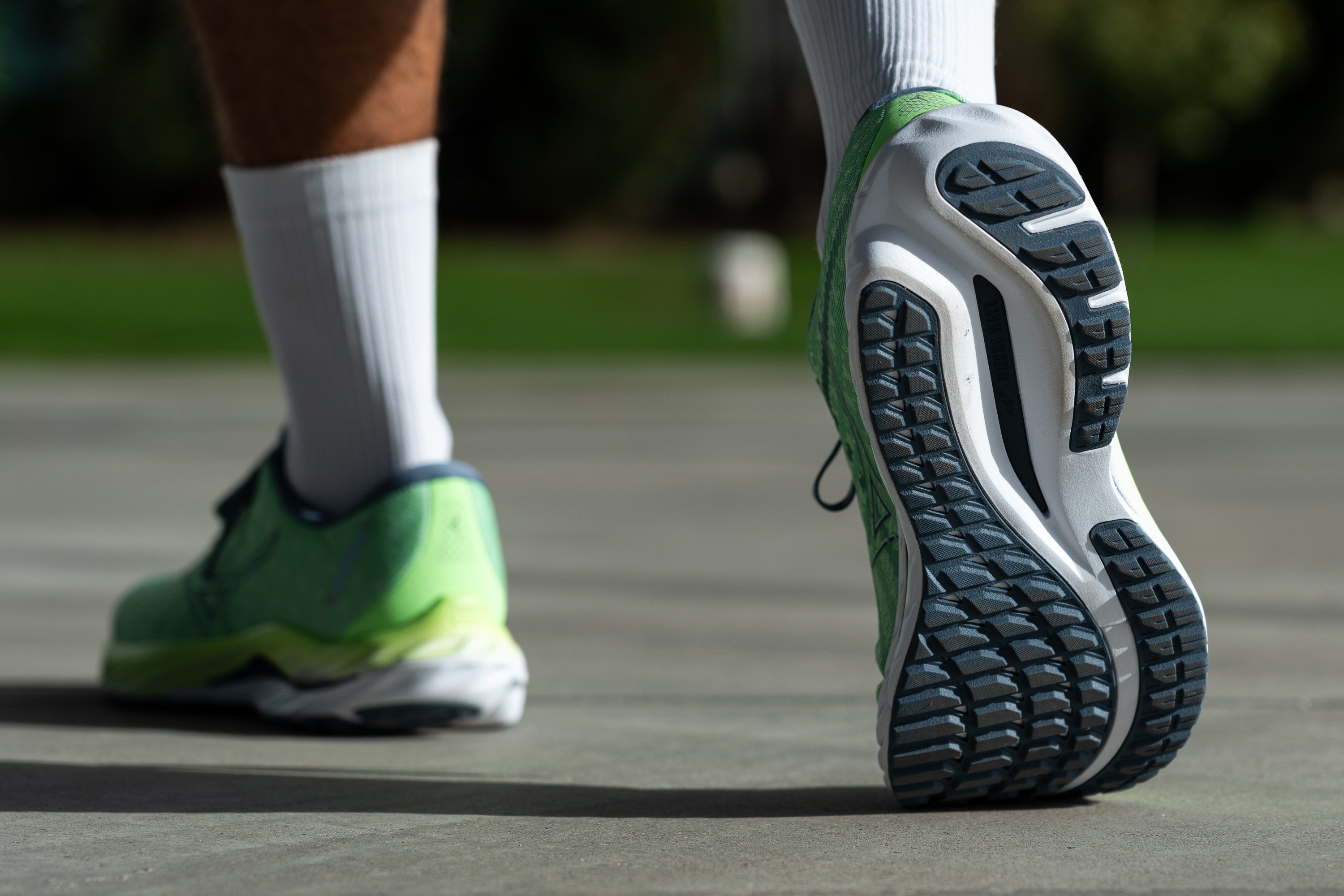
To assess its hardness, we used our Shore C durometer and measured the rubber at 82.3 HC, which is about average for a daily trainer's outsole.
| Wave Inspire 19 | 82.3 HC |
| Average | 79.2 HC |
Outsole durability
After rigorously testing the outsole with the Dremel, we only noted a tiny 0.6-mm dent. Wow!
This excellent score is a testament to the quality of Mizuno's X10 outsole, renowned as one of the best in the market. Its carbon reinforcement—a unique approach in the industry—really makes a difference.
Plus, the grip is exceptional, even in wet conditions, thanks to its design with multiple lugs á la Nike Pegasus 40.

| Wave Inspire 19 | 0.6 mm |
| Average | 1.1 mm |
Outsole thickness
The outsole it's also quite thick at 3.7 mm. This shows us it will take a lot of miles to wear this outsole down—if that ever happens.
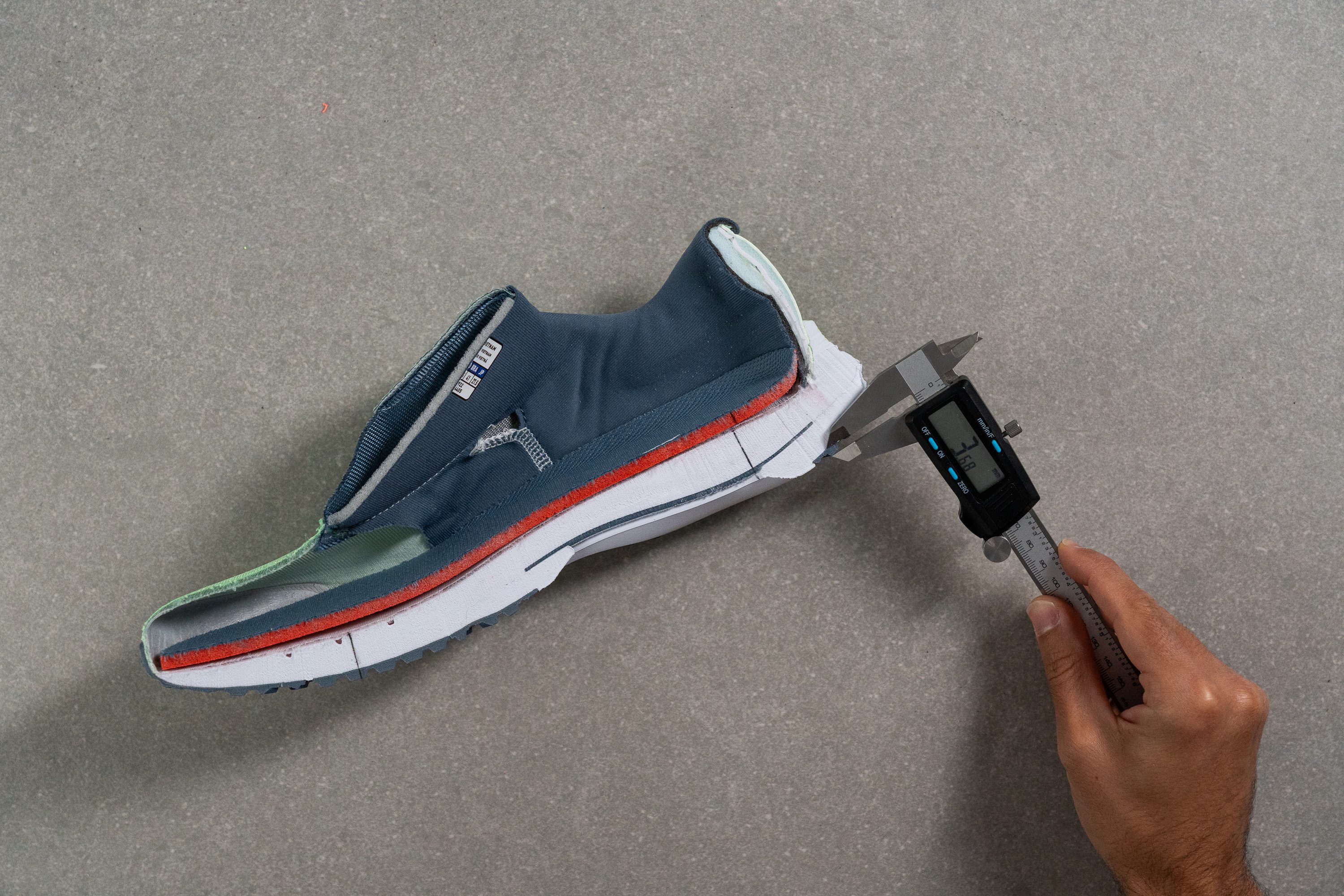
| Wave Inspire 19 | 3.7 mm |
| Average | 3.2 mm |
Misc
Insole thickness
The insole offers a touch more padding than we typically see (5.4 mm), clearly emphasising comfort. We believe this approach is spot-on for this shoe, enhancing the overall plush feel.
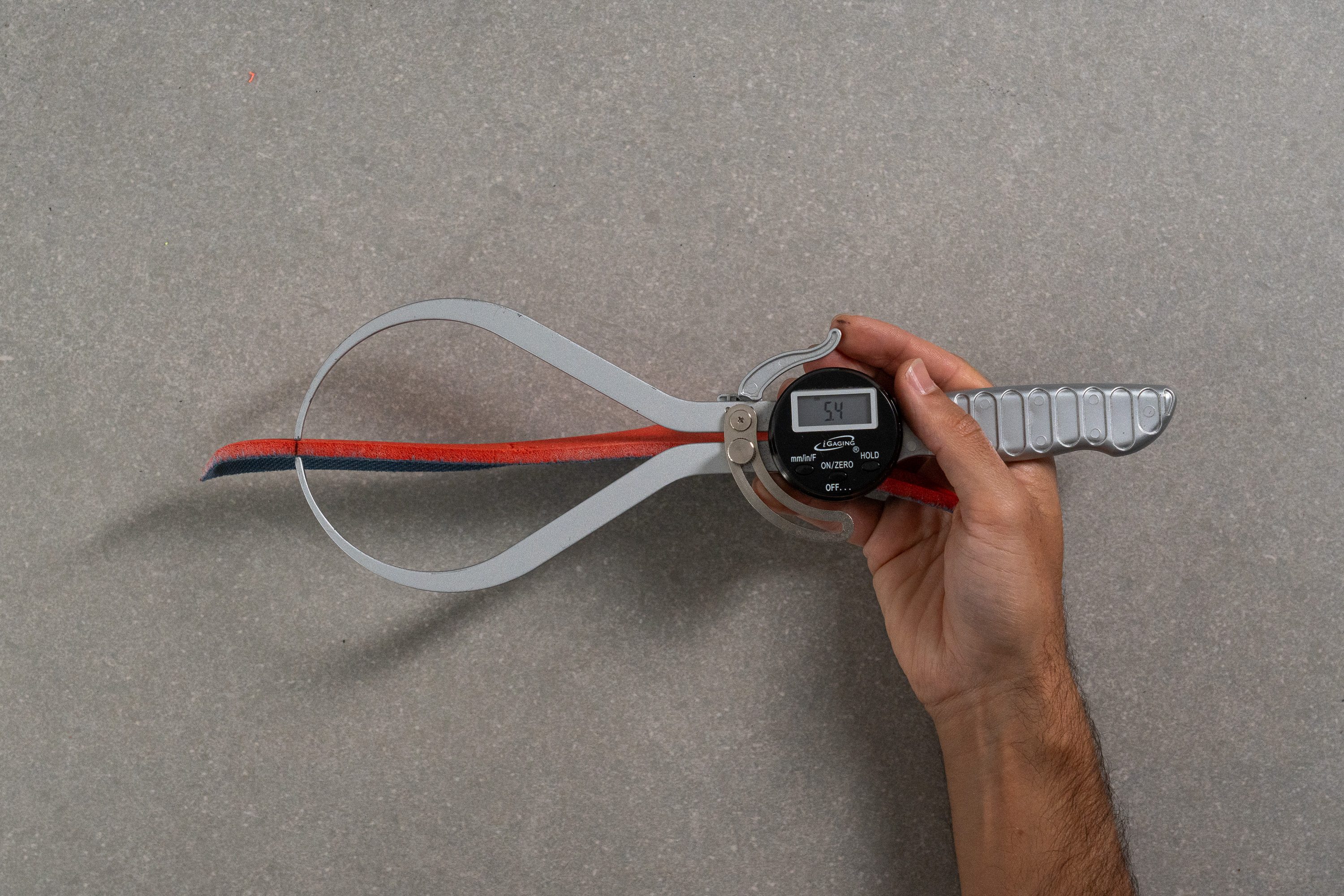
| Wave Inspire 19 | 5.4 mm |
| Average | 4.5 mm |
Removable insole
The insole is not glued, which is great because it means we can easily switch it with insoles from our other running shoes and, because of the ample width of the WI19, they fit without any trouble.
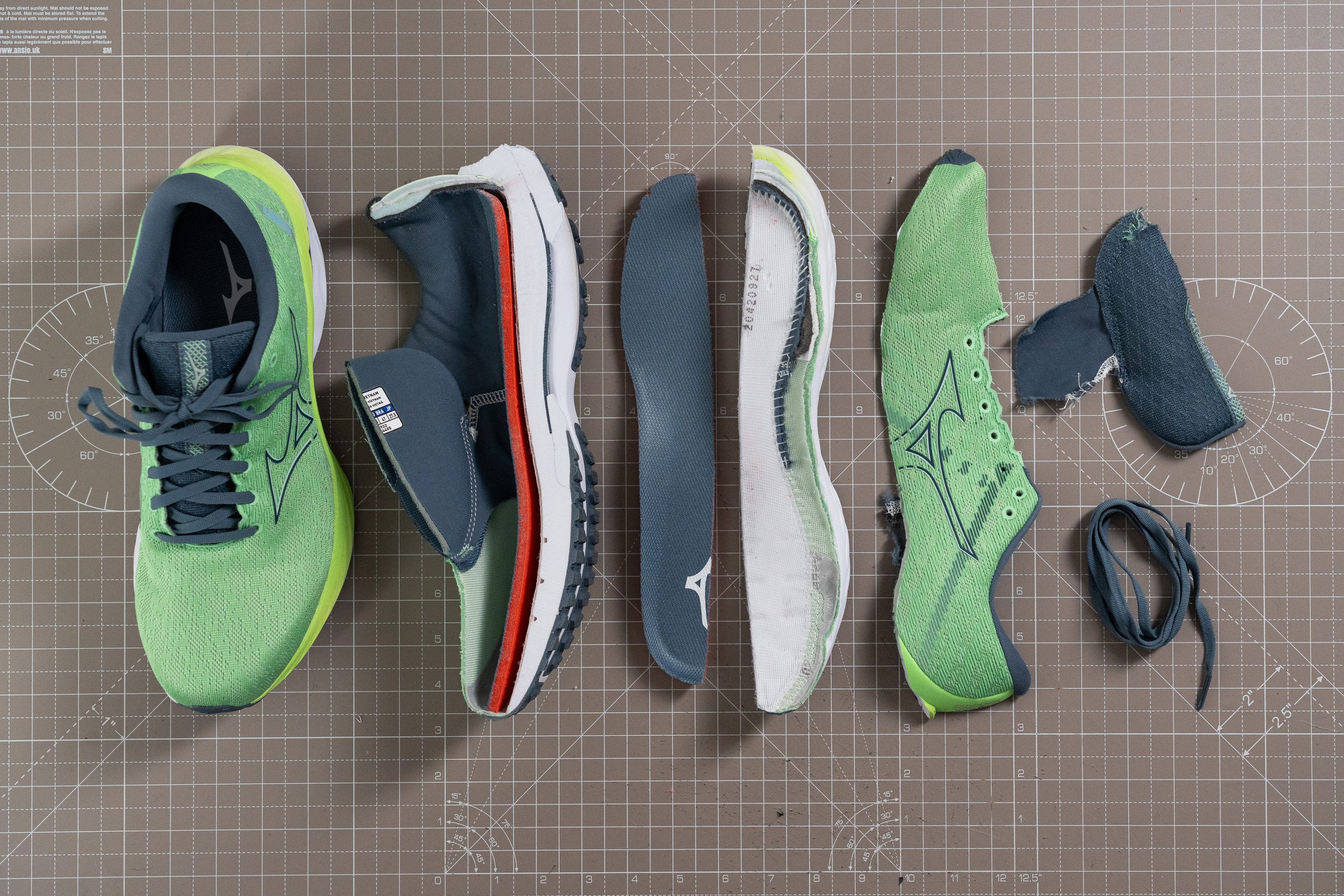
| Wave Inspire 19 | Yes |
Midsole softness in cold (%)
We put the shoe in the freezer for 20 minutes before testing its softness. This time, we measured 23.0 HA.
The difference is just 16.5% from the room-temperature reading, showing that the performance holds up well in different weather conditions. This aligns with the benefits of TPE foams over EVA, enhancing performance as we've shown in this article.
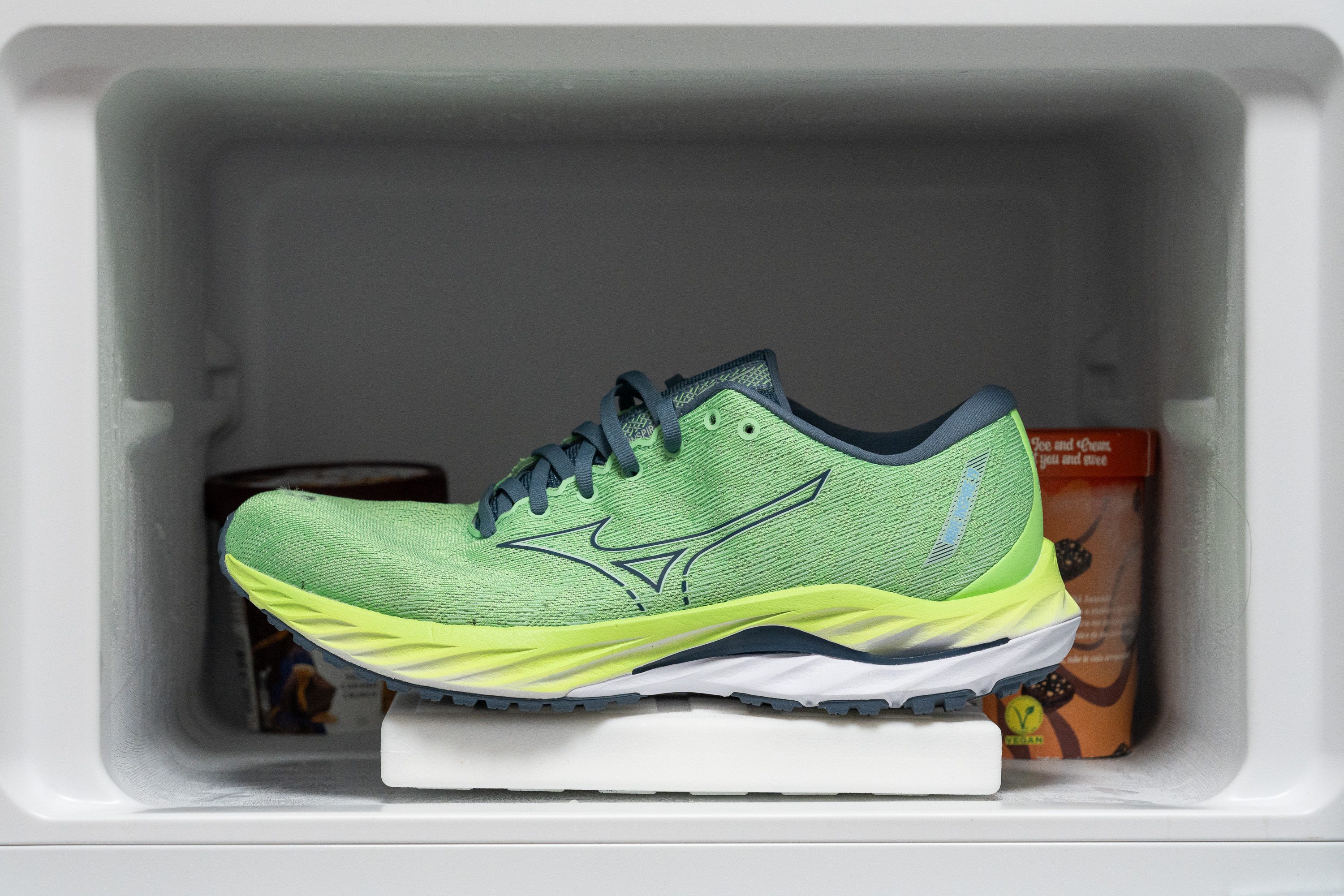
| Wave Inspire 19 | 17% |
| Average | 24% |
Reflective elements
Mizuno chose not to add reflective elements to this shoe, which is a bit of a letdown for us.

| Wave Inspire 19 | No |
Tongue padding
The tongue, at 7.7 mm, is super-cushioned—almost to the point of excess given the shoe's significant weight. We think shaving off a millimeter or two could be a clever move for v20.
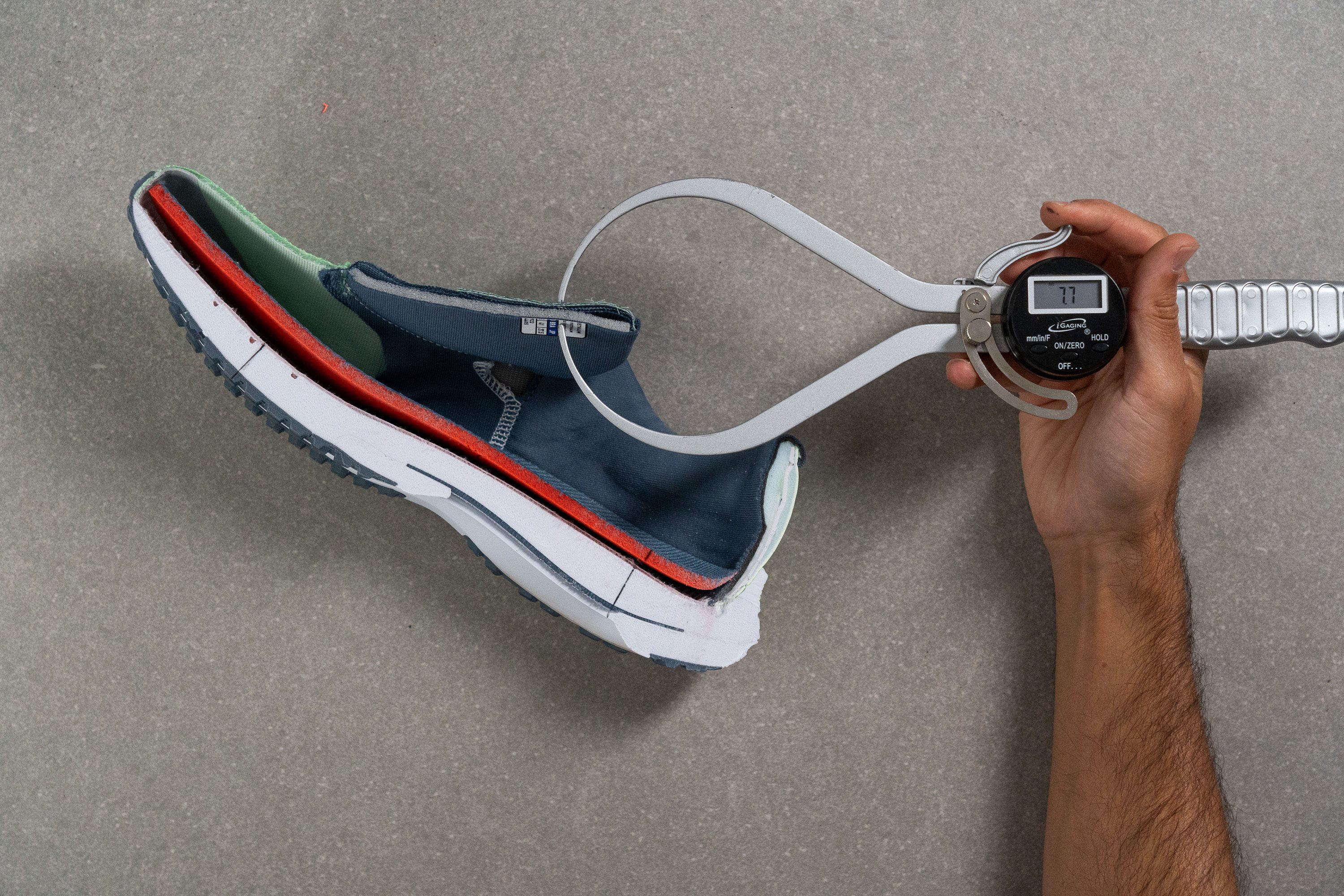
| Wave Inspire 19 | 7.7 mm |
| Average | 5.8 mm |
Tongue: gusset type
The smart addition of a semi-gusseted tongue is a lovely feature that ensures a snug fit and stops the tongue from shifting at faster paces.
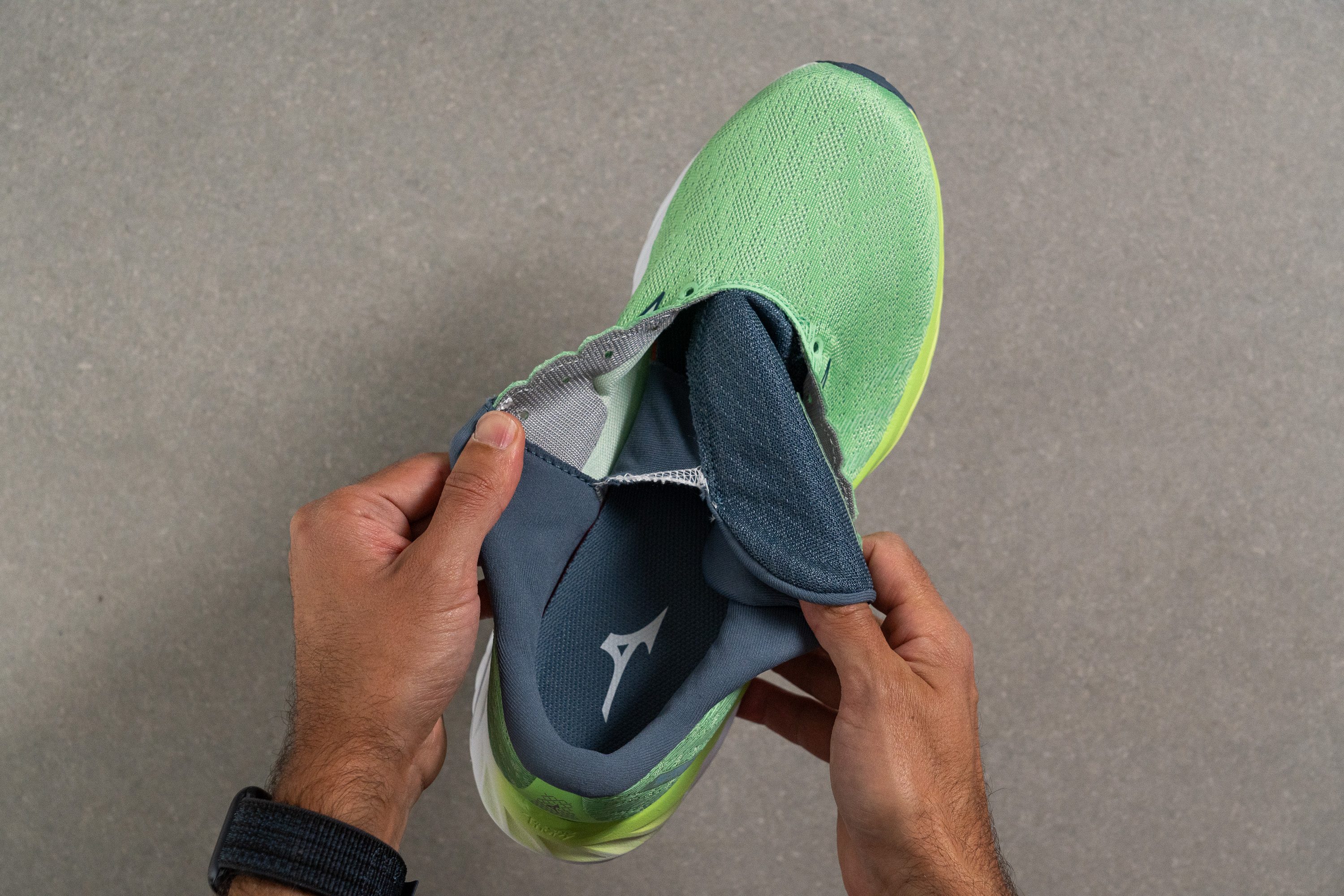
| Wave Inspire 19 | Both sides (semi) |
Heel tab
Staying consistent with the design of recent Mizuno models, including top-tier offerings like the Wave Rebellion Pro, there's an absence of a heel tab.
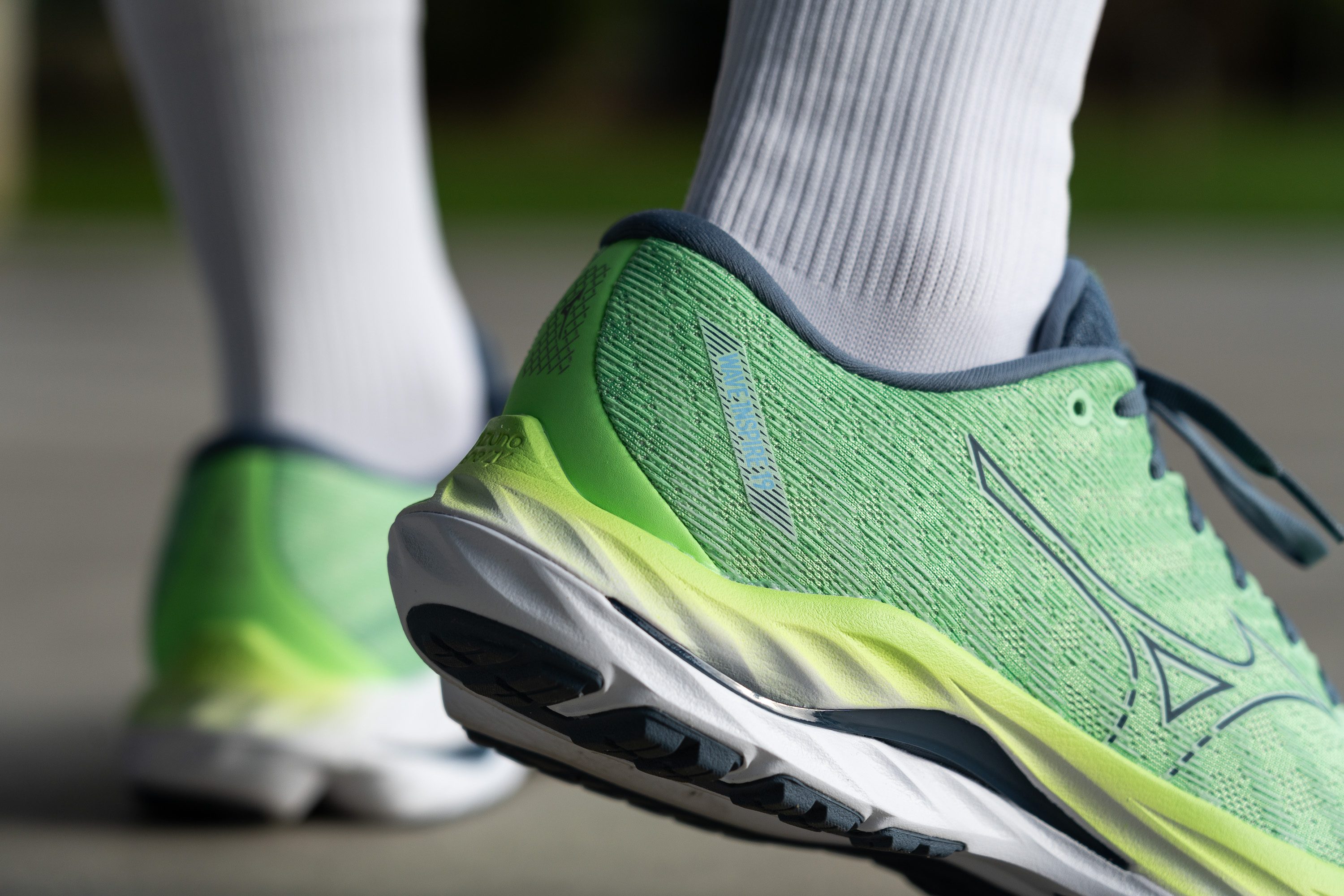
| Wave Inspire 19 | None |

